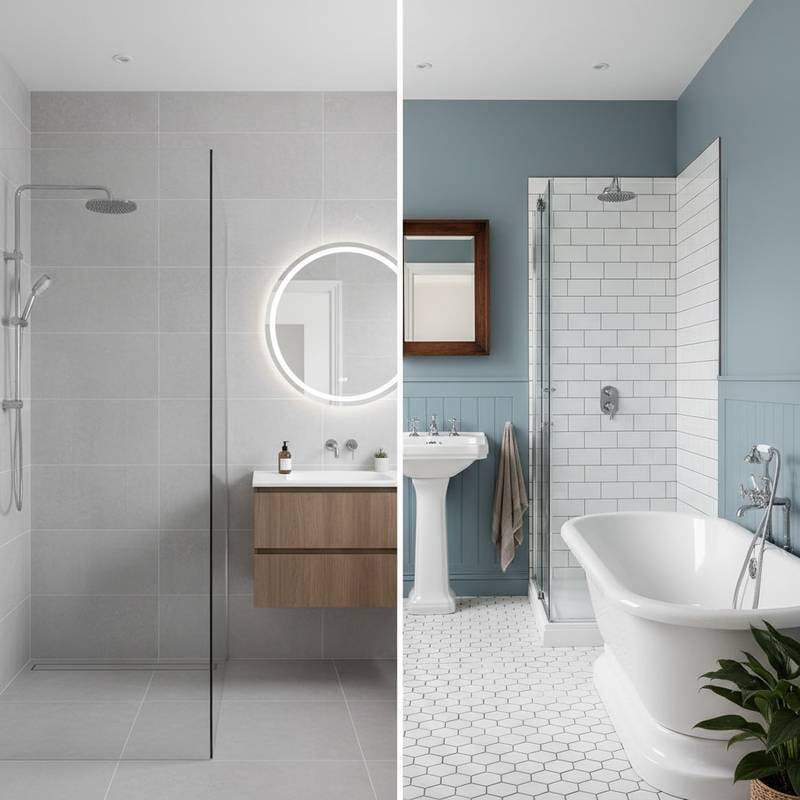2025 ADU Costs Unveiled: Permits, Pricing, and Planning for Builders
An accessory dwelling unit, commonly known as an ADU, expands living space, generates rental income, or accommodates family members on your property. Before initiating construction, a comprehensive grasp of expenses proves essential. This guide details the components of ADU costs, including design, materials, permits, and labor, enabling precise project planning.
ADU Cost Fundamentals
ADU expenses vary based on size, style, and location. Detached backyard cottages typically incur higher costs than garage conversions or basement units, as they demand new foundations, utilities, and roofing. Choices in materials, finishes, and site conditions further influence the total.
In general, ADU costs divide into four primary categories:
- Design and Planning: Encompasses architectural drawings, engineering assessments, and site evaluations to ensure feasibility and compliance.
- Permitting and Fees: Covers local reviews, utility connections, and impact fees required for approval.
- Construction and Materials: Includes framing, siding, roofing, plumbing, and interior finishes to build the structure.
- Utilities and Site Work: Involves grading, drainage, sewer lines, and power extensions for functionality.
Price Ranges for Common ADU Types
Projects differ widely, yet these estimates provide a baseline for 2025 budgeting:
- Garage Conversion ADU: This approach often proves most economical, leveraging an existing structure. Costs focus on insulation, plumbing additions, electrical updates, and interior work, typically ranging from $40,000 to $100,000 depending on scope.
- Attached ADU: Constructed as an extension to the primary residence, it shares a wall and possibly utilities, which lowers expenses. Full building for the addition still applies, with totals often between $80,000 and $150,000.
- Detached ADU (Backyard Cottage or Granny Flat): Offering maximum privacy, this type demands a standalone foundation, roof, and utilities, leading to costs of $120,000 to $250,000 or more.
- Basement ADU: Expenses depend on existing ceiling height, waterproofing needs, and access points. If the foundation remains solid, finishing costs $30,000 to $80,000, though egress windows or moisture barriers may elevate figures.
Factors Influencing ADU Expenses
Multiple elements shape the final price tag. Identifying them allows for sharper estimates.
-
Size and Layout
Larger ADUs require additional materials and labor hours. Opt for efficient layouts, such as open-plan studios under 500 square feet, to minimize costs while maintaining livability. -
Finish Level
Selections for flooring, cabinetry, and fixtures impact aesthetics and outlay. Mid-tier options, like laminate counters and vinyl plank floors, provide longevity and appeal at 20 to 30 percent less than premium alternatives. -
Site Conditions
Challenges like sloped terrain, unstable soil, or restricted equipment access raise excavation and foundation expenses by up to 50 percent. Level sites with easy entry points streamline preparation. -
Utility Connections
Running water, sewer, or electrical from the main home adds notable costs. Proximity matters; units within 50 feet of existing lines may incur $5,000 to $15,000, while longer distances demand trenching and could exceed $30,000. -
Local Regulations
Jurisdictions vary in permit requirements and fees. Progressive areas might waive impact fees for ADUs under 800 square feet to promote housing density, whereas stricter zones impose charges akin to full-home developments, adding $10,000 or more.
Navigating Permits and Planning Expenses
Securing permits verifies adherence to structural, zoning, and safety codes before any work proceeds. Breakdown of typical costs includes:
- Building Permit Fees: Calculated by project value or square footage, often $1,000 to $5,000.
- Plan Review Fees: For scrutinizing drawings and reports, ranging from $500 to $2,000.
- Utility Fees: Connection charges for water or sewer, varying from $2,000 to $10,000 by locality.
- Impact or Development Fees: To fund public infrastructure, potentially $5,000 to $20,000 in high-demand regions.
Anticipate $3,000 to $15,000 overall, scaled to project scale and area. Collaborate with a seasoned builder to forecast these early and sidestep permit-related setbacks.
Builder Pricing Approaches
Professionals employ two standard methods for ADU projects:
- Fixed-Price Contract: Establishes a set total prior to starting, providing budget certainty if plans remain detailed and unchanged.
- Cost-Plus Contract: Reimburses actual labor and materials, plus a contractor markup of 10 to 20 percent. This suits bespoke designs but risks overruns from modifications.
Request itemized breakdowns covering permits, design, labor, and materials for fair bid comparisons. Verify inclusions like contingency funds for unforeseen issues.
Strategies to Control Costs Effectively
Balance your budget through targeted decisions:
- Streamline Design Elements: Select simple geometries and standard roof pitches to cut fabrication and upkeep by 15 to 25 percent.
- Leverage Existing Infrastructure: Site the ADU near current utilities to halve connection expenses.
- Prioritize Practical Finishes: Invest in resilient, versatile materials like fiber cement siding and energy-efficient windows for enduring value.
- Schedule Proactively: Secure materials in advance to lock in rates and prevent timeline disruptions from shortages.
Engage a builder versed in regional ADU ordinances to avert errors in submissions or inspections that inflate costs.
Realizing Long-Term Advantages
ADUs function as income-generating rentals, accommodating guest spaces, or adaptable aging-in-place solutions. Initial investments yield returns via steady rents averaging $1,500 monthly in urban markets and elevated property appraisals of 10 to 20 percent. Incorporate solar-ready roofing or high-R-value insulation to trim ongoing energy bills by 30 percent or more.
Steps to Initiate Your ADU Construction
Commence by obtaining multiple detailed bids, consulting zoning ordinances, and assessing utility feasibility. Develop a phased timeline that sequences design, permitting, and building to maintain momentum. With meticulous preparation, your ADU evolves into a valuable enhancement that elevates property utility and personal satisfaction.











